By Karin Carlson-Snider, Northeast Historic Film
The Jane Morrison Collection is one of the collections that Northeast Historic Film has been able to process thanks to the generous support of CLIR . A majority of the collections that we are contributing to the project are home movies that were filmed by amateurs, but Jane Morrison was a professional filmmaker and the movies in her collection are mostly experimental films and documentaries.
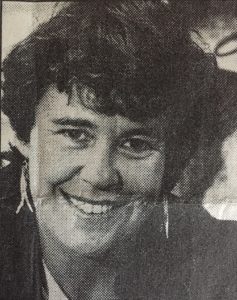
Jane Morrison
Jane Morrison (1947-1987) was born in New Brunswick, Canada, and grew up in Gardiner, Maine. From 1969 to 1974 she taught English and filmmaking at Cony High School in Augusta. In 1974 she moved to New York City to work as an independent filmmaker and teach at the Columbia University School of Film. She began to receive national and international recognition for her work and in 1986 she became a participant in the USIS cultural exchange program, giving lectures and running workshops for film professionals and university groups in Africa. In 1987, at the age of 39, she died of malaria while working in Kenya.
After her death Morrison’s mother contacted NHF about donating her films. The first batch came in 1993 and was mostly Super 8 material. These films came in with no paperwork and very little documentation, but they are a unique representation of her early work. Morrison’s lengthier documentaries and fiction films had been widely screened, but these Super 8 films were largely unknown.
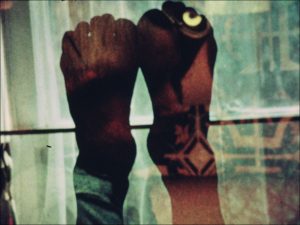
Shot from the final version of “Lipstick,” 1974 by Jane Morrison
After processing the collection our staff identified 3 super-8 films that appeared to be complete: Dream, The Fang Gang, and Lipstick ’74. These shorter early films made up a wonderfully rich complement to her more visible work, often achieving an intimacy unrivalled by her later larger productions. Due to the unique nature of these films we applied for and received a grant from the Women’s Preservation Fund to make 16mm preservation prints of these three films in 2006.
These prints have been requested by theaters and festivals and have been screened in many different cities over the years. With this new CLIR grant I was excited to finally be able to digitize the entire collection, including these three films, and make them available to an even wider audience.
Once I started transferring the collection, however, I discovered a problem. While going through her Super8 I found two different versions of Lipstick ’74. One was the version that we had preserved, and assumed to be the only copy. The second one was spliced in the middle of an unprocessed reel with other unrelated footage. I digitized both versions of Lipstick ‘74 and I compared the two. They had the same beginning and ending, but the middle was different, which presented a problem. Had we preserved the correct version of the film back in 2006?
We have two accessions of Jane Morrison footage. One is smaller with only 20 reels, mostly Super8 footage. The second accession came in several years later and has hundreds of reels of 16mm prints and elements from her later work. As part of this grant we were able to inventory this collection and among it I found one 16mm 400 ft. can labeled “Lipstick.” I transferred that print and the mystery was solved.
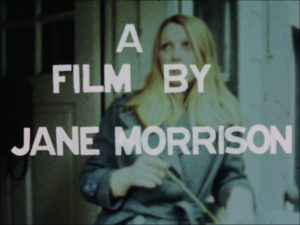
Ending credits of “Lipstick,” an experimental film made by Jane Morrison in 1974
The 16mm print has opening and closing titles (missing from the Super 8 versions) and the reel itself consists of both of the super8 reels that I found superimposed on top of each other. So the super8 reel that we had assumed to be the final version was indeed only an element. I was disappointed to discover that we had made a mistake in our original preservation, but when NHF applied for the grant our collection manager at the time didn’t have access to the print that I recently discovered and he acted on good faith that he had the final version.
While the original mistake is regretful it offers a lesson in how difficult film preservation can be sometimes, especially with a collection such as this one – a large donation of mostly undocumented work done by a filmmaker who has passed away. I am grateful that this grant allowed me to discover the true version of Lipstick and enable a large audience to final see the film as Jane Morrison intended.
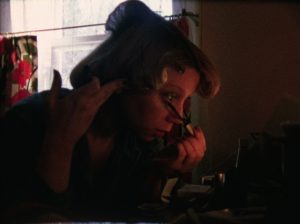
Image from the Super 8 element that was preserved
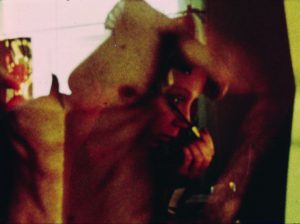
Same shot with image superimposed over it from the final cut of Lipstick
